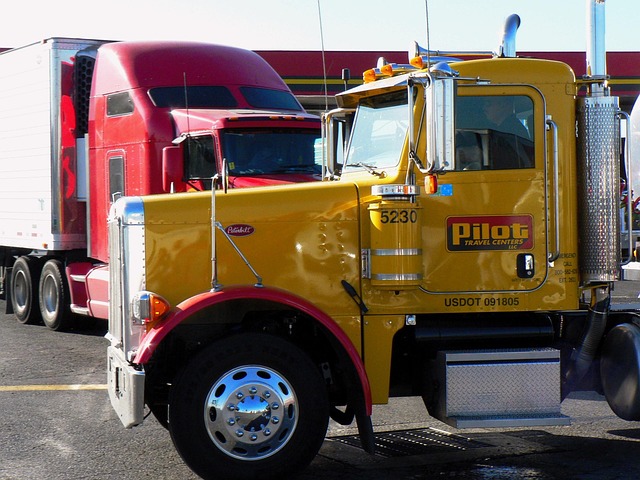Looking to register your car in California? Navigating the process can be straightforward with the right knowledge. This comprehensive guide walks you through every step, from understanding the basics of California’s car registration requirements to gathering essential documents and utilizing a VIN verifier for a seamless experience. Learn how to choose the perfect license plate and understand associated fees. Get ready to hit the road legally!
- Understanding the California Car Registration Process
- Gather Required Documents for Car Registration in CA
- How to Use a VIN Verifier for a Smooth Registration
- Choosing the Right License Plate and Fees
- Step-by-Step Guide: Registering Your Vehicle in California
Understanding the California Car Registration Process

Understanding the California Car Registration Process
In California, registering a car involves several steps that ensure vehicle safety and roadworthiness. The process begins with gathering essential documents, including proof of ownership, insurance, and identification. Once these are in order, the next crucial step is obtaining a Vehicle Identification Number (VIN) inspection. This can be done at an authorized location using a mobile VIN verifier for convenience. The VIN inspection verifies the vehicle’s history, ensuring it meets safety standards and isn’t stolen or previously damaged.
After successful VIN verification, you’ll need to visit a California Department of Motor Vehicles (DMV) office with your documents. There, you’ll complete application forms, pay registration fees, and have your car’s emissions tested if applicable. Upon approval, the DMV will issue a registration certificate and license plate, officially registering your vehicle for road use in the Golden State.
Gather Required Documents for Car Registration in CA

Before you start the registration process for your vehicle in California, it’s crucial to gather all the required documents. This includes presenting a valid driver’s license or state ID card, proof of insurance, and the vehicle’s title. The Vehicle Identification Number (VIN) is another critical piece of information that needs verification. You can conduct a VIN inspection or utilize a mobile VIN verification service to ensure the vehicle’s history is clear and meets California’s requirements.
Additionally, have your proof of residency handy, such as a utility bill or lease agreement, as well as any applicable fees for registration and title transfer. These documents will streamline the process and help avoid potential delays at the California Department of Motor Vehicles (DMV) office.
How to Use a VIN Verifier for a Smooth Registration

Using a VIN (Vehicle Identification Number) verifier can greatly streamline the car registration process in California. Before submitting your application, it’s advisable to employ a reliable mobile vin verifier or online tool to ensure the vehicle’s history is clear and free from any red flags. This step is crucial as it allows you to conduct a thorough vin inspection, which verifies the vehicle’s authenticity and helps prevent potential fraud.
By utilizing these services, you can quickly access detailed information about the car’s past owners, maintenance records, accident history, and more. Many mobile vin verification apps or online platforms offer this service, making it convenient for California residents to check their vehicles’ histories on-the-go. This proactive measure ensures a smoother registration experience and helps you make an informed decision before finalizing the car’s ownership transfer.
Choosing the Right License Plate and Fees

When registering your car in California, choosing the right license plate is an essential step that can enhance both your vehicle’s aesthetics and its security. Each region within California offers various options, from standard to custom designs, allowing you to personalize your plate according to your preferences. Before selecting a license plate, ensure you comply with all state regulations regarding size, font, and content.
Additionally, be prepared to pay the associated fees for registration. These include a base fee set by the California Department of Motor Vehicles (DMV) and additional charges for optional services like personalized plates. A vin verifier or mobile vin inspection can prove your vehicle’s identity during the registration process, streamlining your experience and ensuring a smoother transaction. Keep in mind that fees may vary depending on factors such as the type of vehicle and whether you’re renewing your registration.
Step-by-Step Guide: Registering Your Vehicle in California

Registering a car in California involves several straightforward steps, ensuring your vehicle is road-ready and legally permitted to drive within the state. Here’s a step-by-step guide to help you navigate the process seamlessly. Begin by gathering essential documents, including your vehicle’s registration from the previous state, proof of insurance, a valid driver’s license, and the Certificate of Title (if applicable). Next, visit the California Department of Motor Vehicles (DMV) website or a local DMV office to initiate the registration process online or in-person.
During the application, you’ll be prompted to provide key details about your vehicle, such as its make, model, year, and Vehicle Identification Number (VIN). A crucial step in this process involves conducting a VIN inspection using a reliable mobile VIN verifier to ensure the vehicle’s history is clean and free from any discrepancies. Once all necessary information is submitted, along with the required fees, you’ll receive your new California vehicle registration plates and documents, marking the successful completion of the registration process.
Registering a car in California involves several key steps, from gathering essential documents to selecting the right license plate. By utilizing a VIN verifier, you can streamline the process and ensure a smooth registration experience. Remember to follow the step-by-step guide provided, keeping your vehicle’s details accurate and up-to-date throughout. With these measures, you’ll be on your way to legal and compliant car ownership in no time.



